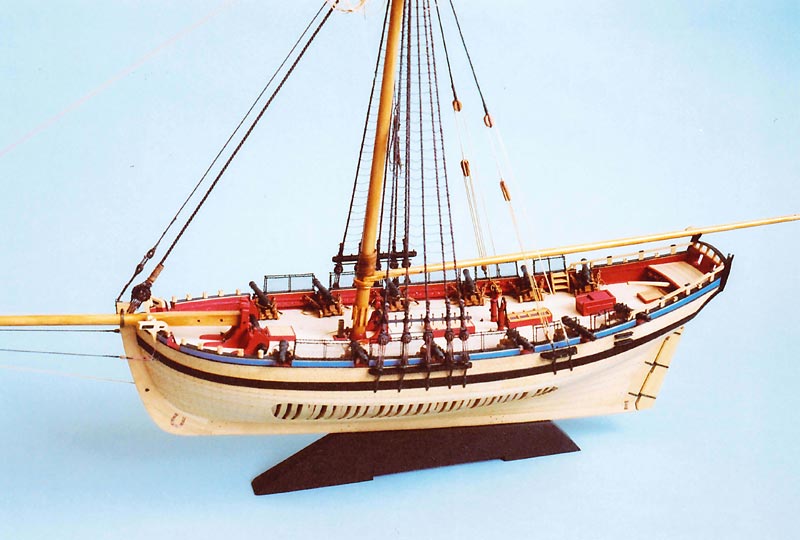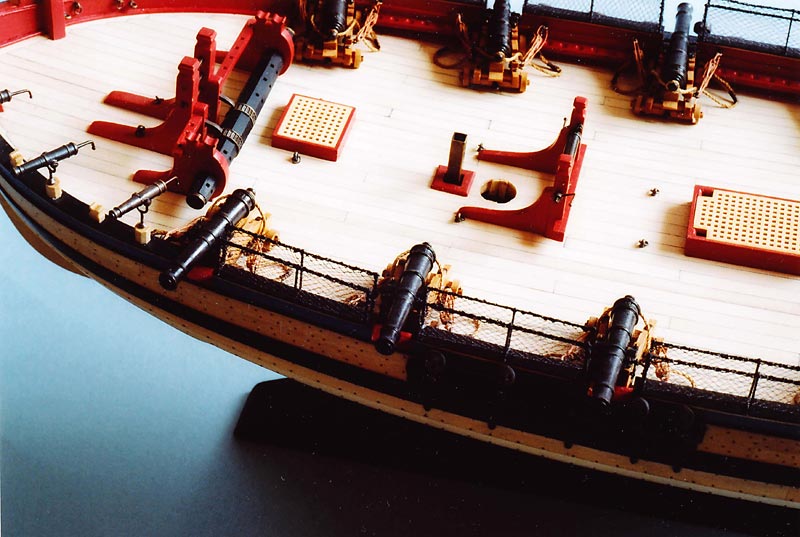Alert was laid down in January 1777, one of fifteen cutters built for the British Navy during 1777 and 1778. She was built at Dover by Mr. Henry Ladd, and was launched on June 24, 1777. Handed over to the Naval Authorities, she was taken to Deptford for coppering, masting and fitting out. She was refloated in the graving dock on July 24, 1777. At that time her armament consisted of ten four-pounders, and an unspecified number of swivels. She was awaiting orders on August 11, 1777 under the command of Lieutenant John Bazely.
On Friday, September 19, 1777, Alert challenged the American Brig, Lexington. After two engagements, with a break for repairs, Alert eventually took the larger and more heavily armed American Lexington. The main reason for the smaller Alert’s success was the fact that Lexington ran out of ammunition following prior engagements where she, along with the American vessels Dolphin and Reprisal, had taken fourteen prizes in the previous fourteen days. Alert took Lexington into Plymouth, where she herself underwent repairs following the engagement.
In January of 1778, Alert’s armament was upgraded to 12 six-pounders, retaining her swivels. She recommissioned under Lieutenant W.G. Fairfax. When Fairfax was promoted to the rank of Commander in May, Alert was re-rated to a sloop to comply with Admiralty requirements—though she was still rigged as a cutter. When France entered the war in 1778, Alert joined the British Channel Fleet under Admiral Keppel, in search of the French Fleet. On June 17, 1778, along with the frigate Arethusa, Alert engaged the French frigate Belle Poule, and the armed lugger Coureur. Alert engaged the lugger, which eventually struck her colours. The engagement between the two frigates was inconclusive. The Channel Fleet returned to Spithead, along with Alert and her second prize.
A look at the Alert deck, detail forward.
While there is no mention of hammock nettings in Goodwin’s work, the French report of the engagement between Alert and the Coureur indicate that when the crew of the lugger attempted to board Alert they could not get over the hammock nettings. This report also confirmed the fact that she carried twelve six-pounders, plus twelve swivels. The French commander later indicated that he felt that the hammock netting seriously compromised the sailing abilities of the Alert.
The French fleet broke out of Brest on July 8, 1778. The next day Admiral Keppel, aboard the 100-gun Victory, and the Channel Fleet commenced a pursuit. The fleet also included two vice-Admirals: Sir Robert Harland who was aboard the 90-gun Queen; and Sir Hugh Palliser in the 90-gun Formidable, which was commanded by Captain John Bazely—first commander of the Alert. During the pursuit, the French frigate Junon took Alert, which was engaged alone in scouting operations searching for the French. This ended the short but successful career of the British Naval Cutter Alert–1777. While there are casual, unsubstantiated references indicating Alert threw guns overboard during the pursuit by Junon, I could not substantiate this with formal records or reports.
When Alert sailed on her first assignment under the French flag, she met with some unknown misfortune, disappearing without a trace. There was no record of an engagement in the war records from either side, nor was there ever any information as to what happened to her or her crew. She, and they, simply disappeared. There are indications that the British built another cutter named Alert. Lieutenants Bazely and Fairfax went on to achieve flag rank.


